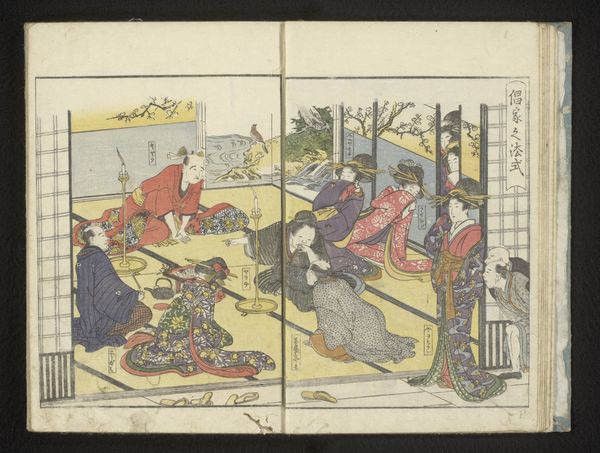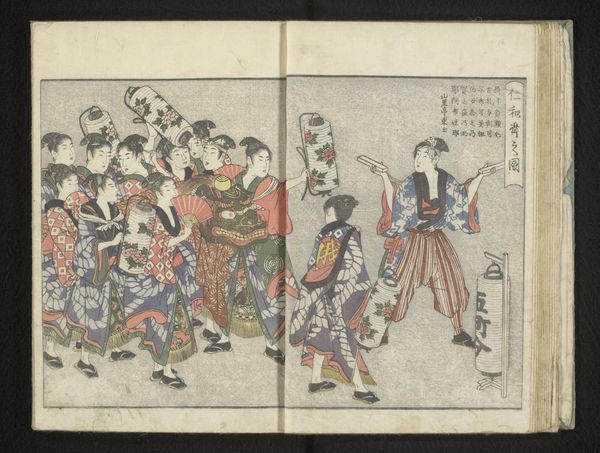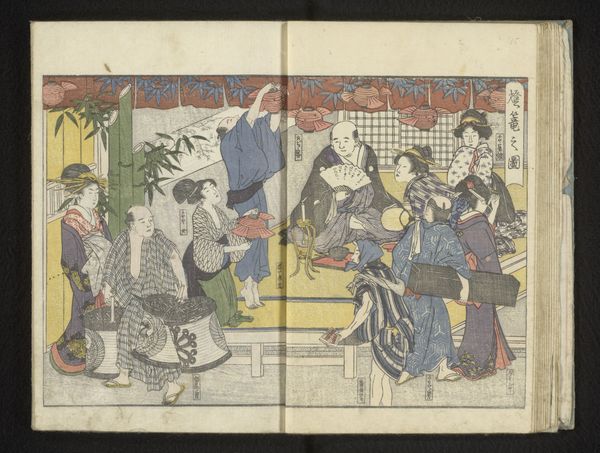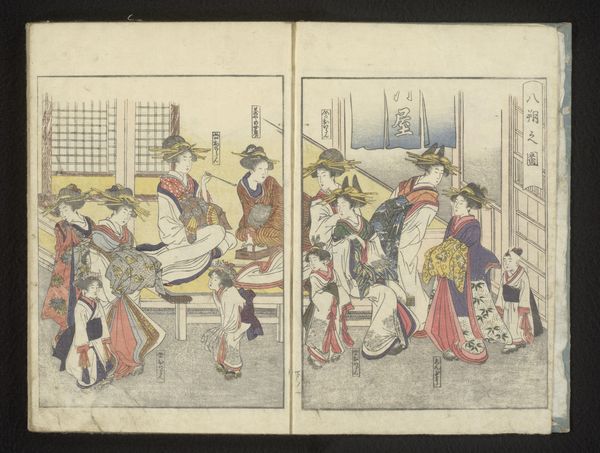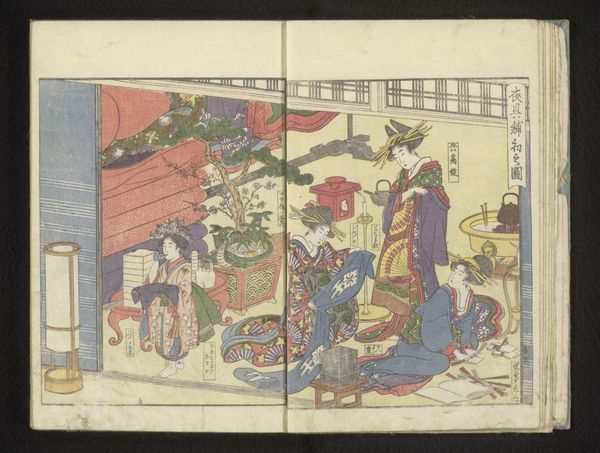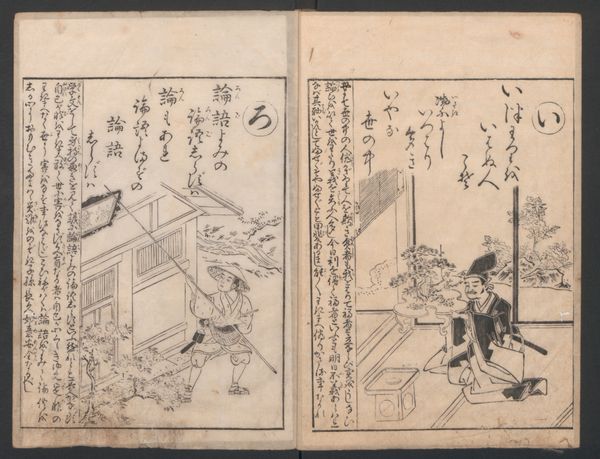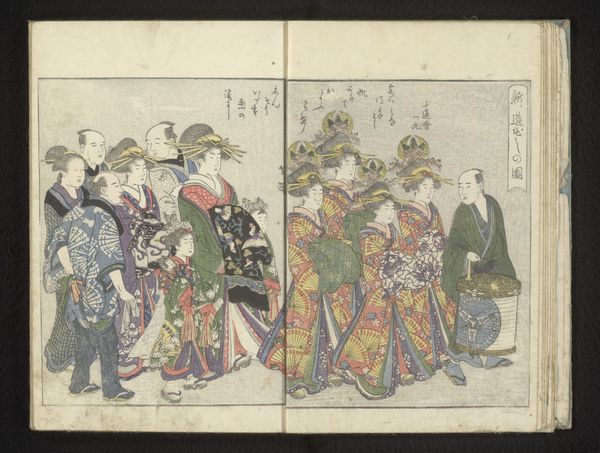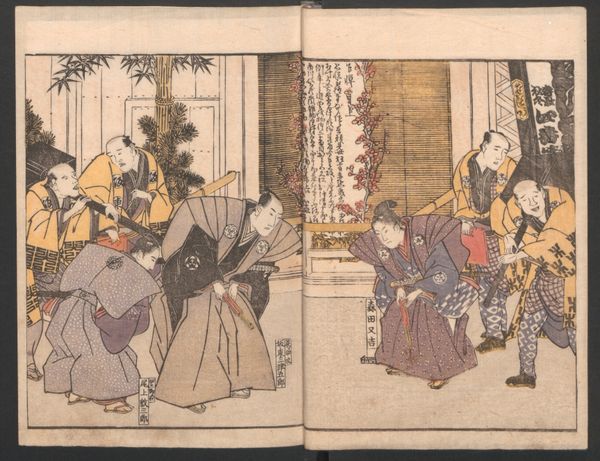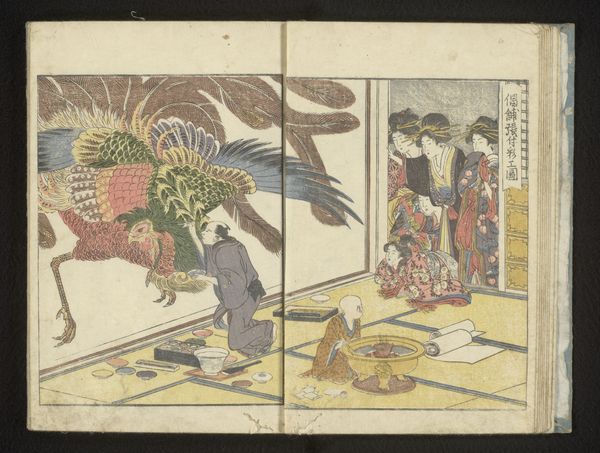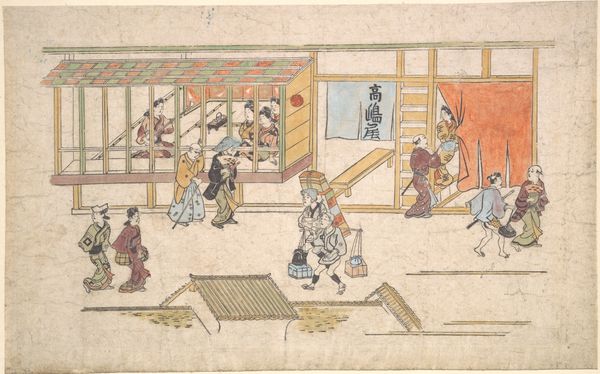
print, woodblock-print
#
narrative-art
# print
#
asian-art
#
ukiyo-e
#
woodblock-print
Dimensions: height 224 mm, width 158 mm
Copyright: Rijks Museum: Open Domain
Editor: This is "Blind Man’s Bluff on a Free Day" by Kitagawa Utamaro, dating back to 1804. It’s a woodblock print from the Ukiyo-e tradition. It has a really lively and chaotic energy, especially with all the figures interacting. What stands out to you in this image? Curator: The most striking element is the game itself, isn’t it? Blind Man's Bluff, seen here in this domestic space, is more than just a game; it is a representation of chance and destiny. It reminds us of the ephemeral nature of human experience, something Utamaro captured masterfully. The blindfold, what does it conceal? And what truths might it reveal to those watching? Editor: That’s a neat way to look at it. I hadn't thought of the blindfold as a symbol of destiny. But does the setting— what appears to be an upper class home— play any significance? Curator: Absolutely! This intimate space amplifies the personal aspect of destiny. We can glimpse individuals enjoying the simple pleasure of games and leisure activities. But is there something subtly tragic present in that theme, knowing this print originates during Japan’s Edo period? Editor: It is interesting to consider it against the backdrop of the Edo period... perhaps it reflects both the indulgence and potential anxieties of that era. Curator: Indeed. The game becomes a mirror reflecting not just the individuals within the image but the cultural anxieties surrounding the idea of predetermination versus individual action. It is, I find, deeply resonant. Editor: Thanks for opening up a different avenue of thinking for me. I appreciate learning about the deeper cultural significance of this piece. Curator: And I find your fresh perspective valuable. Seeing familiar symbols through new eyes always offers a richer understanding.
Comments
No comments
Be the first to comment and join the conversation on the ultimate creative platform.

